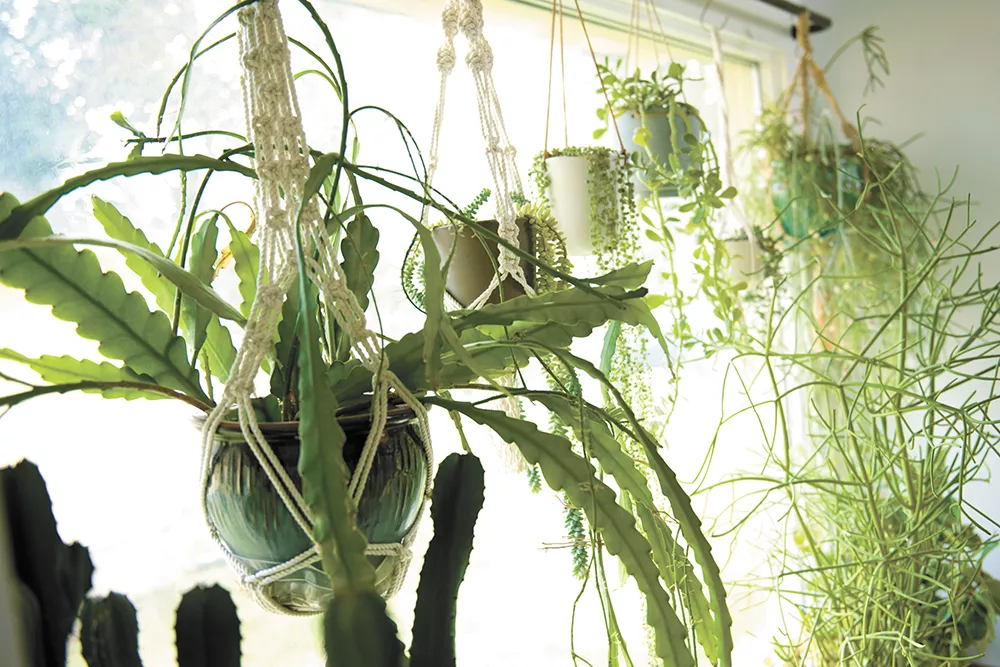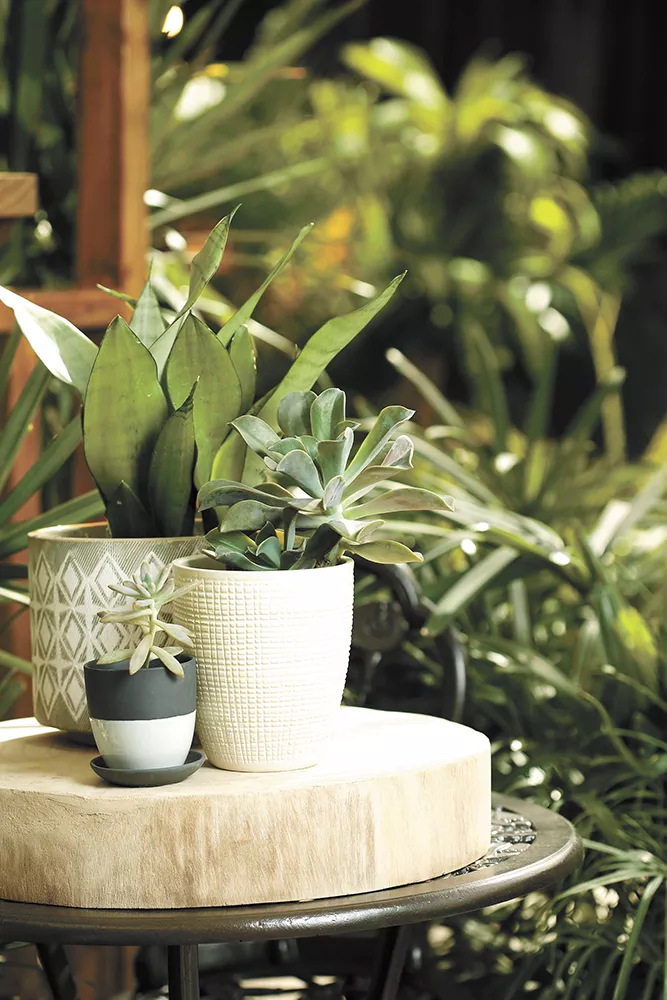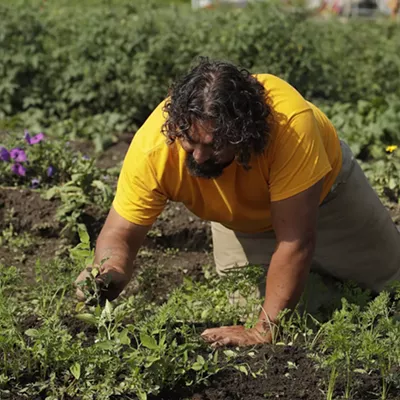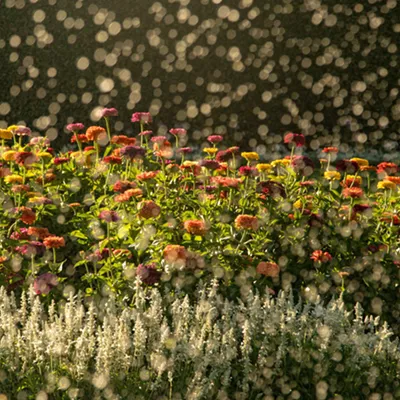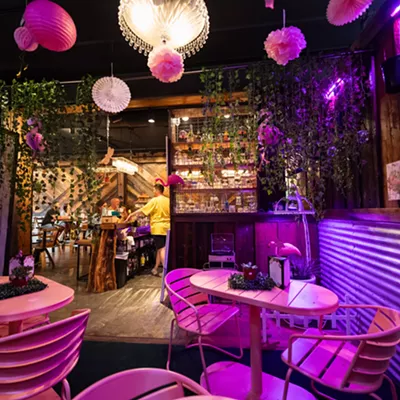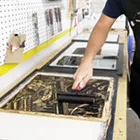As a plant lover and the spring intern at the Inlander, I decided to take a stab at the role of greenery guru. I'm a college senior and, because the last few years have consisted of temporary housing situations, I am unfortunately not yet at the point in my life where a greenhouse or outdoor garden is possible. Luckily, there are plenty of indoor options to spruce up your living space.
Houseplants reduce indoor air pollution, deter illness, boost healing and increase focus, not to mention they look awesome. My indoor jungle currently consists of some succulents, an aloe vera plant, a quite large Boston tiger fern, two pothos, a snake plant, hanging English ivy and some baby clippings of a spider plant I'm attempting to propagate. It may seem intimidating at first, but trust me, if I can do it, anyone can.
PAINLESS PLANTS
Not everyone has the time, patience or magic green thumb to keep houseplants happy and healthy. Luckily, there are a few indoor plants that require hardly any attention but still bring that splash of life to your home.
Pothos or "devil's ivy" is a beautiful vining plant that looks awesome in a hanging planter. Pothos come in a variety of shades of green, even marbled, and will tolerate low light and less than frequent waterings. In fact, this plant prefers the soil to be dry between waterings, making it nearly impossible to kill.
Snake plants are an air-purifying form of foliage, helping to remove air pollutants from your home. The sword-like fronds of this plant can grow to a variety of heights depending on the type. Snake plants tolerate low light and you only need to water this guy once every two to six weeks.
Spider plant may sound like it belongs in Little Shop of Horrors, but this aesthetically pleasing plant is an essential addition to any hanging plant collection. Spider plants are extremely adaptive and also ridiculously easy to propagate, meaning you could get three, four or five plants for the price of one if you feel like taking the time. Spider plants only require water once every week or two and prefer medium to bright indirect light.
PROPAGATION STATION
If you feel like you have a fairly developed green thumb, skip purchasing your plants at the nursery and give propagation a shot. Propagation refers to the natural breeding process of plants; in other words, growing new plants from leaves, seeds and other parts of a parent plant. To start the process, take a few clippings from your favorite houseplant. Experiment with water propagation and stick your clippings in a glass of water to watch the roots grow for three to four weeks before planting, or put your plant snippets straight into soil. Keep clippings near a window to ensure indirect bright light and change out the water every couple days. Water your planted clippings like normal, and watch your free new plant grow.
WHAT NOT TO DO
Cultivating your own indoor jungle can be fairly straightforward, so long as you avoid these common mistakes when caring for your houseplants.
Over/underwatering is the No. 1 mistake plant owners make. More often than not overwatering is the cause of a plant's failing health. Most plants don't need to be watered until the first inch or so of topsoil is dry. Of course, this isn't true for all plants as some, like Boston ferns, need to be watered at least twice a week. The best thing to do is know what kind of plants you're caring for and what their specific needs are.
Direct light is far from necessary for most plants. Instead of accelerating photosynthesis, direct sunlight can actually burn plant leaves and cause them to fry. Only desert-adapted species can tolerate that much heat.
Hygiene is just as important for our plants as it is for us, only they can't clean themselves. Prevent clogged pores by cleaning dusty leaves with a damp towel every so often and keep an eye out for pests or fungus that might be invading your plant's pot. While dust is normal, if you're seeing creepy crawlies hanging around it might be a sign of bacteria. This can be due to overwatering, which means you should give your plant some time to dry out a bit. Infected leaves are also a bad sign, but the best thing to do is to simply remove the damaged foliage.
DIY SPICE CABINET
Since we're all stuck inside and battling our urge to snack endlessly, why not give yourself a kitchen project other than eating. Start your own herb garden right on your windowsill and reap the benefits in all the meals to come. Basil, mint, chives, oregano, rosemary and thyme are all easy to grow and thrive indoors. For a long-term investment start with seeds, keep soil moist until germination, and with bright light and weekly watering you'll have mature plants in six to eight weeks. At 10 weeks you can even replant your herb garden outside if the urge strikes you and weather permits.
EXPERT ADVICE
While I love my plants as much as the next novice horticulturist, if you're looking to start growing at home, or just want to devote some more time towards your indoor vegetation, consult the experts. Whether that's checking out YouTube's expansive collection of plant-related videos or investing in books like How Not to Kill Your Houseplants and Wild at Home, don't forget you also have local specialists here in Spokane. Liberty Park Florist & Greenhouse and Ritters Garden & Gift are both still operating with adjusted hours and services, so give them a call or check out their websites to start your own indoor jungle and answer all your houseplant queries. ♦

